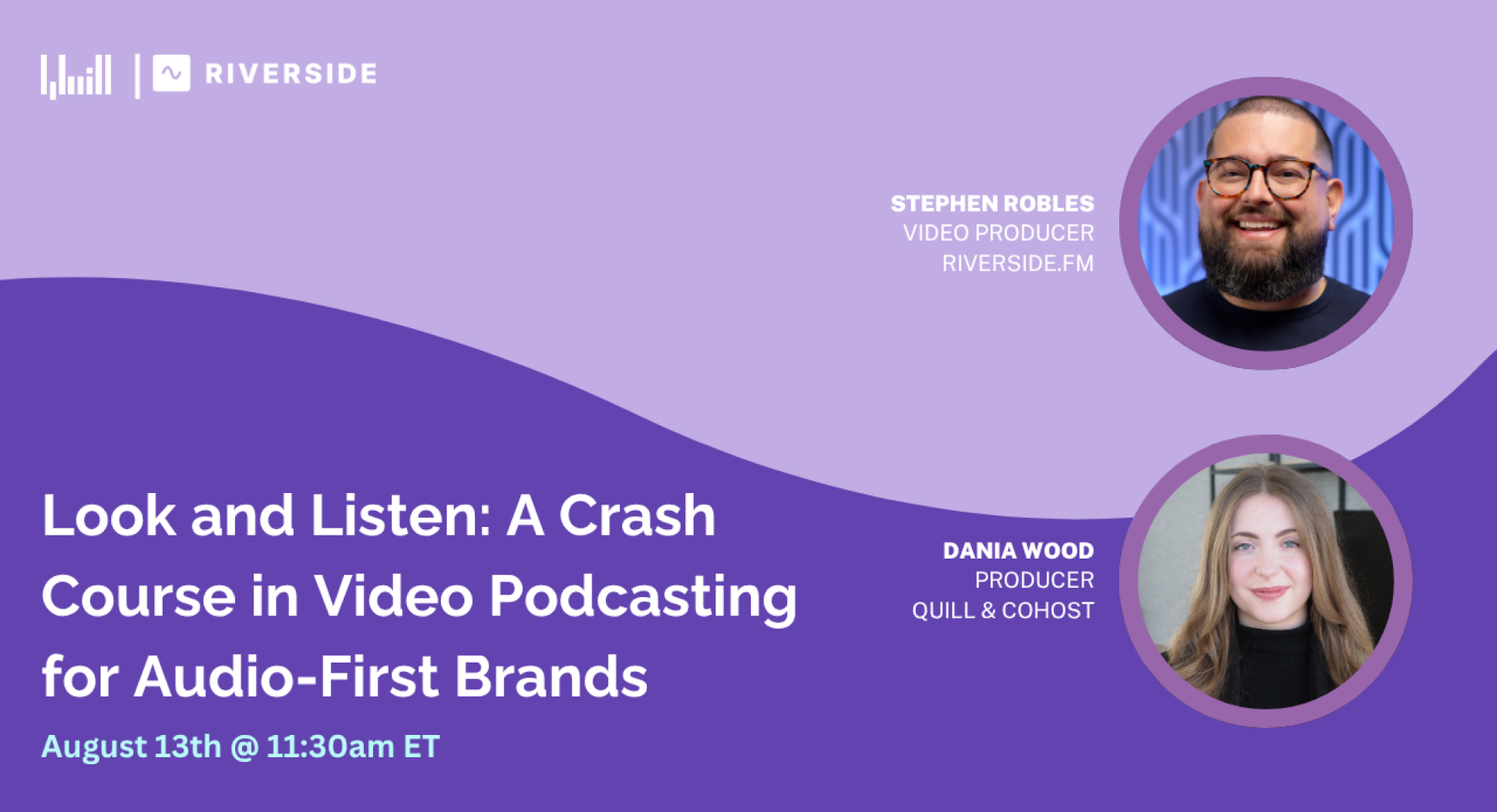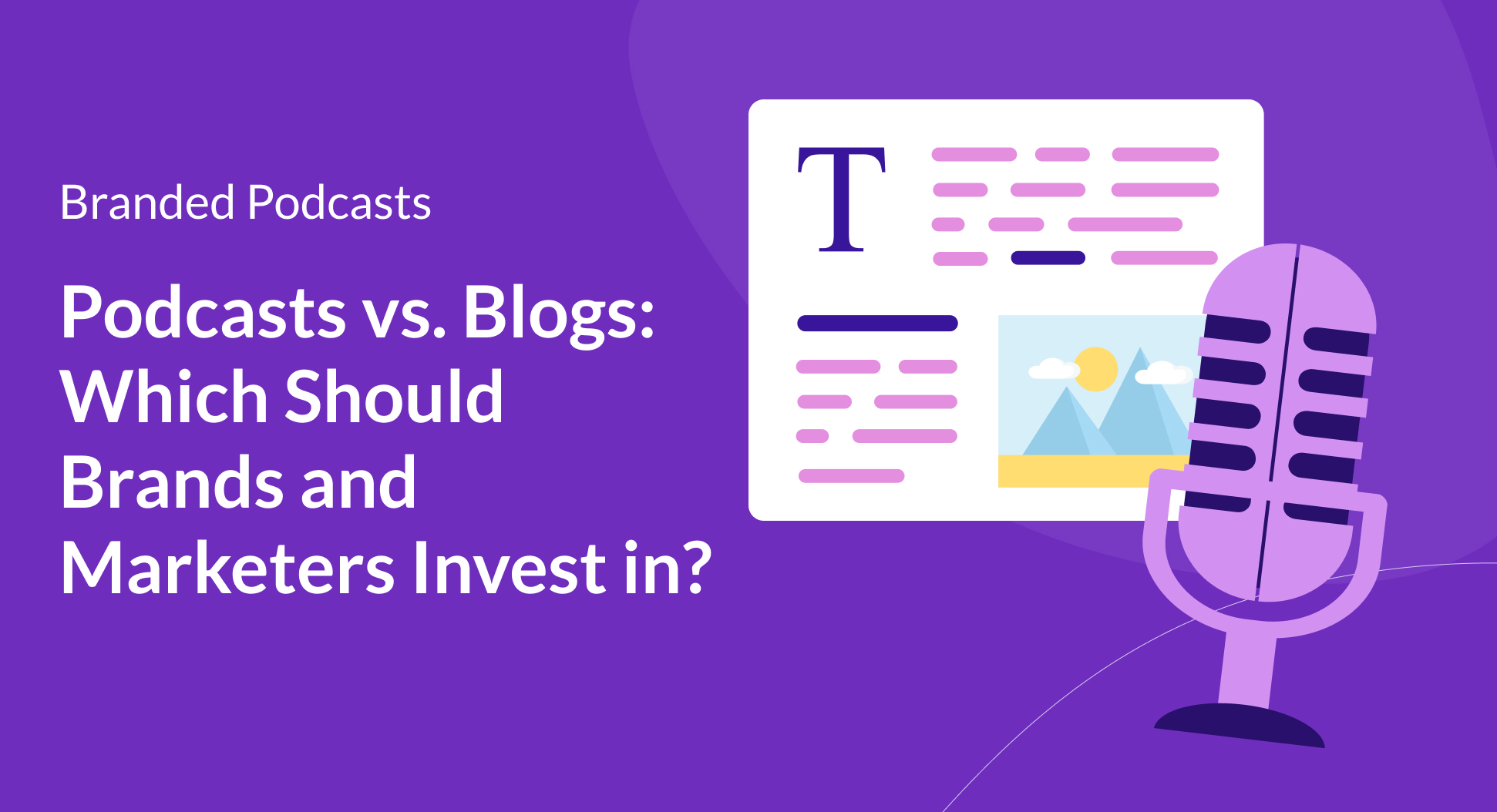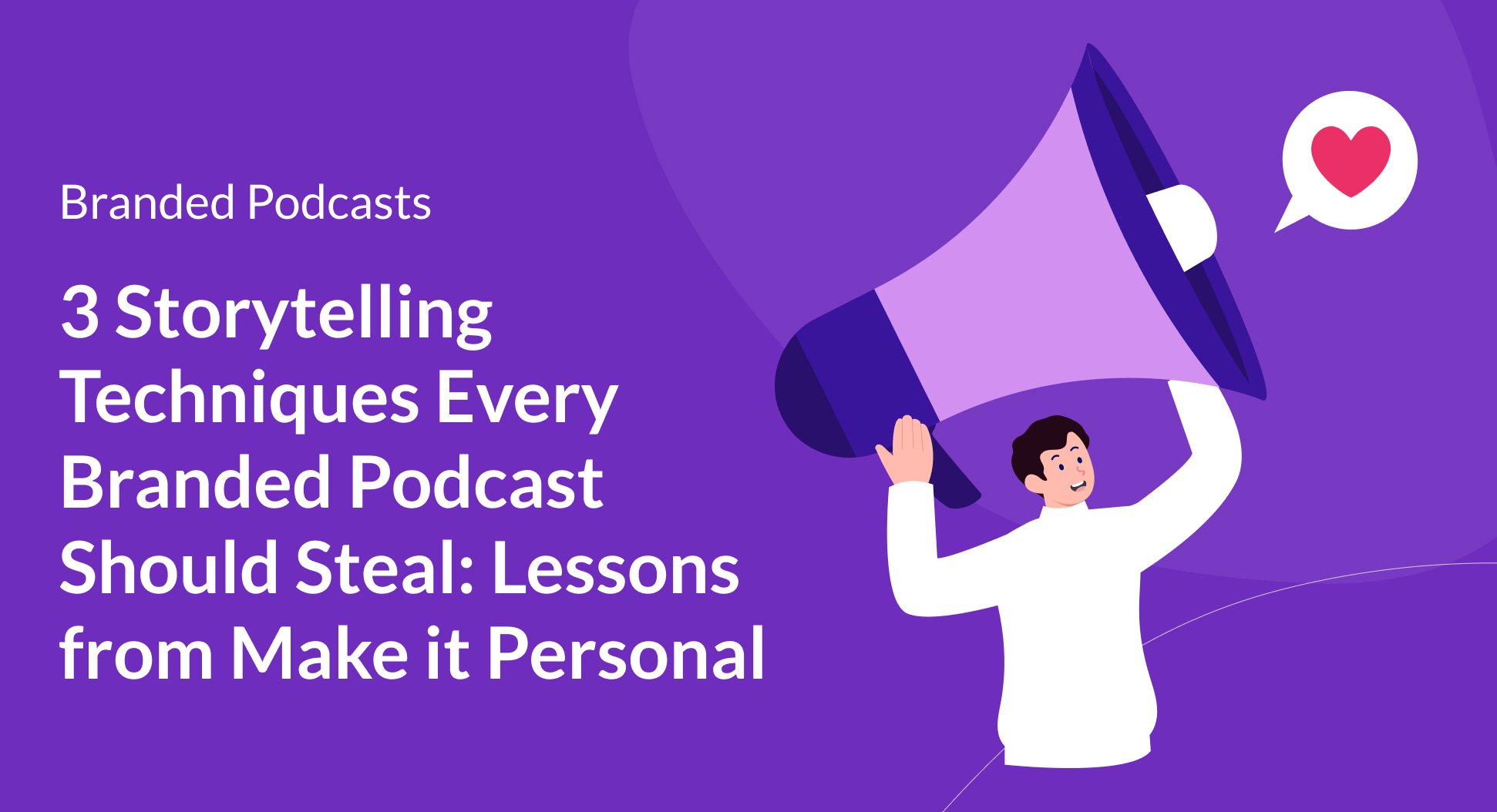Contents
If there’s one thing the podcast industry can’t stop talking about in 2025, it’s video.
At our latest Brand Camp session, Quill Podcast Producer Dania Wood sat down with Stephen Robles, Video Producer at Riverside.fm, to unpack why the shift from audio-only to video-first podcasting isn’t just inevitable — it’s already here.
The conversation covered everything from audience behavior and platform strategies to repurposing content across channels. In case you couldn’t make it live, tune into the recording below or continue reading for the top takeaways:
Why video anyway?
While there are a lot of reported benefits to setting up the camera, here are the top three Dania and Stephen have observed:
Content diversification
Content repurposing is a key part of any successful podcast marketing strategy.
Instead of being limited to audio and written content, adding video to your branded podcast opens the door to Instagram Reels, YouTube Shorts, TikTok, and more.
We can see that video is the top-performing content across the board:
- Tweets with video have 10x more engagement compared to text-only tweets
- 62% of people watch videos under 60 seconds all the way through
- Consumers remember 95% of the messages from video clips compared to just 10% from text posts
Increased discoverability
Podcasting reaches 89 million American listeners each week. Compared to ~197 million YouTube users in the U.S., with 62% of them watching YouTube videos every day. This presents a massive opportunity to increase your series’ discoverability and visibility.
With that said, YouTube Podcasts has a user base 5x the size of traditional podcast listening apps, and the site has already been ranked the top platform for consumption at 34%. On top of that, Spotify is making moves toward video with a 70% increase in video content on the app in the past year alone.
With all this in mind, video offers a unique opportunity to reach new audiences and boost discoverability on two of the largest podcast directories.
Reach younger audiences
For Gen Z, podcasts are as much a visual format as they are an audio one, and discovery often starts with a clip in their feed long before a listening app even enters the picture.
Here are the numbers to back it up:
- 49% of Gen Z monthly podcast listeners say video provides a better understanding of context and tone through facial expressions and gestures
- 45% of listeners feel more connected to podcasters through video
- 84% of Gen Z monthly podcast listeners consume podcasts with a video component
But here’s the catch: Gen Z’s attention isn’t automatic. They expect relevance, authenticity, and content that feels built for the platforms they live on. A long-form interview can work — if it’s paired with short, platform-native video clips that spark curiosity and invite interaction.
A branded show can win them over — if it leads with real stories and perspectives, not marketing scripts.
Best practices for brands adopting video
As you’ve probably gathered, adding video to your podcast workflow takes more than setting up a camera and hitting record. Here are some of Stephen and Dania’s top tips for brands considering video:
Make sure your video strategy is intentional
The key to building a video strategy that lasts is intentionality: video should serve your goals, not just exist because “everyone else is doing it.”
Start by identifying what you want to achieve — whether it’s expanding discoverability, boosting engagement with Gen Z audiences, or creating new content assets — and let that guide every decision around production, style, and promotion.
Another part of this is ensuring that you have the resources – people, time, and/or money to produce a video worth watching through. Think filming, editing, and promotion. Brands that succeed are those that plan realistically, experiment often, and double down on what works.
Repurpose your video across platforms
One of the biggest advantages of video is the ability to turn a single recording into multiple content pieces:
- Short clips from your episodes can live on TikTok, Instagram Reels, or YouTube Shorts, providing hooks that bring new audiences back to the full episode.
- Cut your 45-minute interview into a series of 30- to 60-second clips that highlight key insights, funny moments, or behind-the-scenes glimpses across Facebook and LinkedIn.
- Post timely Instagram or Snapchat stories of BTS content or new episode releases.
Repurposing also extends beyond video. Transcribe episodes for blog posts, create carousels for LinkedIn, or design quote graphics for social. This multi-format strategy maximizes the value of each recording while keeping your content ecosystem on-brand and up to date – without constantly starting from scratch.
Tailor your video length, style, and content to the platform
Not all platforms are created equal, so your video strategy shouldn’t treat them the same. Different audiences expect different experiences on different platforms, so aligning your video content to where you’re posting is key.
Here’s a breakdown of best practices for the most common video podcast channels:
- LinkedIn: Focus on thought leadership, actionable insights, or behind-the-scenes moments. Keep clips 60–90 seconds; use captions and clean visuals. Professional audiences value content that informs or teaches, so make every second meaningful.
- YouTube Shorts: Short, punchy clips under 60 seconds with clear hooks in the first few seconds. Emphasize visual storytelling and captions. Viewers scroll fast — grab attention immediately and give them a reason to watch or click through to full episodes.
- TikTok: Trend-driven, personality-driven content that leverages audio, text overlays, and visual effects. 15–60 second clips work best. Lean into humor, curiosity, or bold takes that feel native to the platform.
- Instagram Reels: Visually polished, engaging short-form clips (30–60 seconds). Use captions, music, and platform-native editing features. Reels reward content that’s instantly engaging and shareable, so focus on moments that can hook viewers without context.
- Instagram Stories: Quick, episodic snippets that feel casual and behind-the-scenes. Polls, stickers, and Q&A features encourage interaction. Stories are about real-time connection — use them to tease content, involve your audience, and drive traffic to full episodes.
Don’t overstretch yourself
Video doesn’t always mean full-length episodes. For some brands, creating short-form social videos or animated content is enough to capture attention without the extra burden of producing a polished, full-length video for every episode. Take, for example, Darknet Diaries:
The bigger lesson is focus: pick formats that align with your resources, goals, and audience behavior. You can always scale up later. Brands that succeed in video aren’t necessarily the ones that produce the longest or flashiest content — they’re the ones that stay consistent, meet audiences where they are, and create content that’s valuable and engaging, even if it’s a fraction of the full episode.
Branded video podcasts FAQ
Are video podcasts better than audio-only podcasts?
Video isn’t automatically better — it’s different. Audio still wins for convenience, multitasking, and building a deep connection with listeners. Video adds context, personality, and social shareability, but it’s also more resource-intensive. Whether adding video is the right move for you will ultimately depend on your brand, your goals, and your audience.
Will video actually reach new listeners, or just give us new content?
Both, potentially. Video opens doors to YouTube and social-first audiences, particularly younger Gen Z viewers who consume podcasts visually. But don’t assume everyone will come to your show for the video. The key is integrating it strategically: short clips for discovery, long-form video for loyal fans, and always an audio version for your core audience.
How is measuring the impact of video podcasts different from audio-only podcasts?
Unlike most audio-only shows, video often thrives on platforms like YouTube, Instagram, and TikTok. Each has its own analytics dashboard to track unique, platform-specific metrics. You’re now looking at things like views, watch time, and engagement signals like likes, comments, and shares that help you understand discovery and connection in a visual context.
Video podcasts: The bottom line for brands
What was made clear from Dania and Stephen’s discussion is that video podcasting isn’t just a passing trend — it’s a shift in how audiences discover, consume, and connect with content.
For brands, embracing video means tapping into new discovery channels like YouTube and TikTok, deepening engagement with younger demographics, and creating a steady stream of repurposable assets that extend the life of every episode. But success doesn’t come from simply hitting record; it comes from aligning your video strategy with your goals, resources, and audience behaviors.
For more branded podcast insights like these, make sure to keep up with future Brand Camp webinars and subscribe to The Branded Podcaster, our bi-weekly newsletter.






.png)

.png)




.png)
.png)
.png)
.png)